Qualcomm Snapdragon 805 Performance Preview
by Anand Lal Shimpi on May 21, 2014 8:00 PM EST- Posted in
- Tablets
- Snapdragon
- Qualcomm
- Mobile
- SoCs
- Snapdragon 805
GPU Performance
3DMark
Although it's our first GPU test, 3DMark doesn't do much to show Adreno 420 in a good light. 3DMark isn't the most GPU intensive test we have, but here we see marginal increases over Snapdragon 800/Adreno 330. I would be interested in seeing if there are any improvements on the power consumption front since performance doesn't really change.
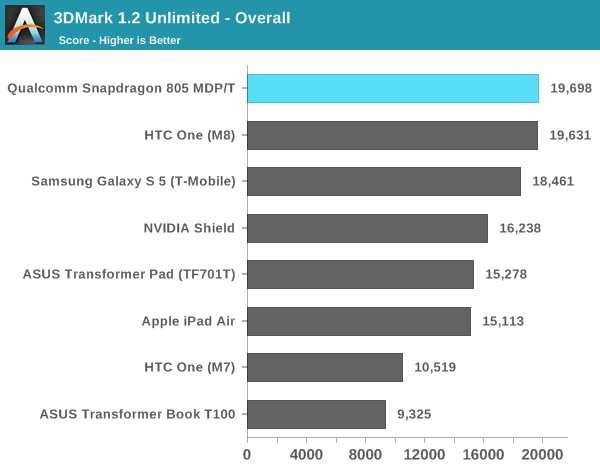


Basemark X 1.1
Basemark X 1.1 starts to show a difference between Adreno 420 and 330. At medium quality settings we see a 25% increase in performance over the Snapdragon 801 based Adreno 330 devices. Move to higher quality settings and the performance advantage increases to over 50%. Here even NVIDIA's Shield with Tegra 4 cooled by a fan can't outperform the Adreno 420 GPU.
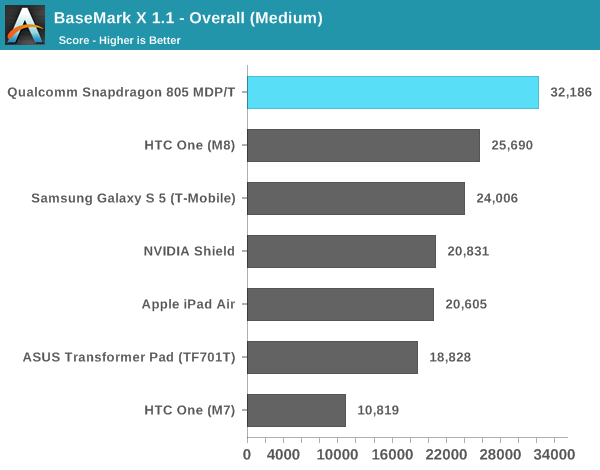
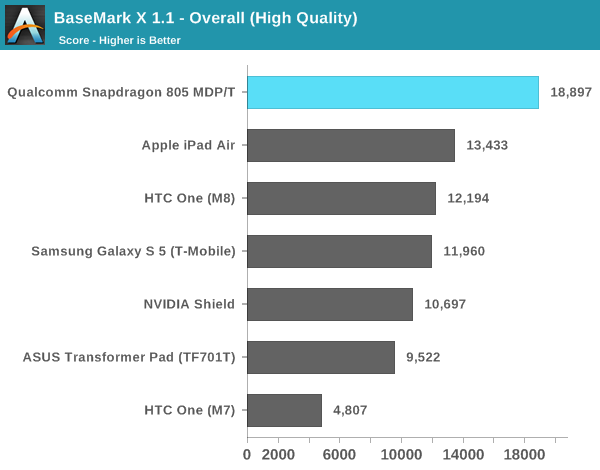
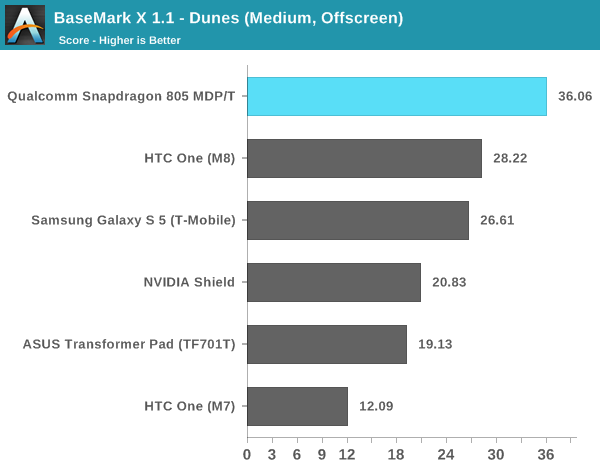
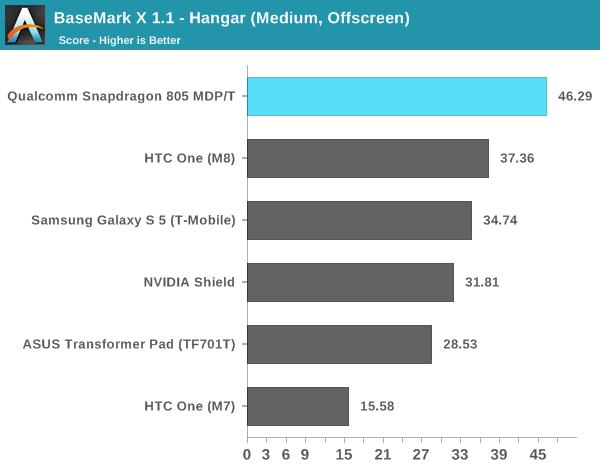


GFXBench 3.0
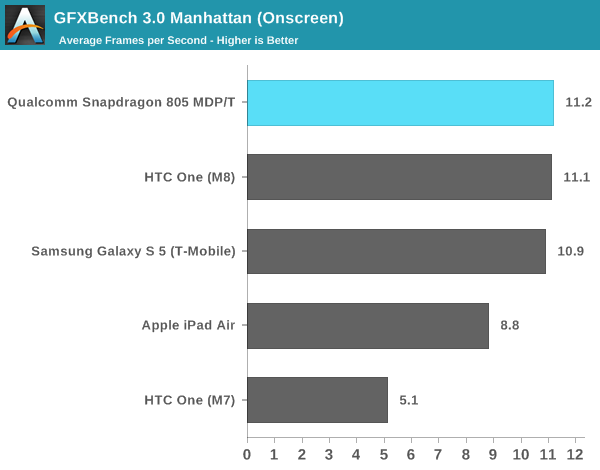
Manhattan continues to be a very stressful test but the onscreen results are pretty interesting. Adreno 420 can drive a 2560 x 1440 display at the same frame rate that Adreno 330 could drive a 1080p display.
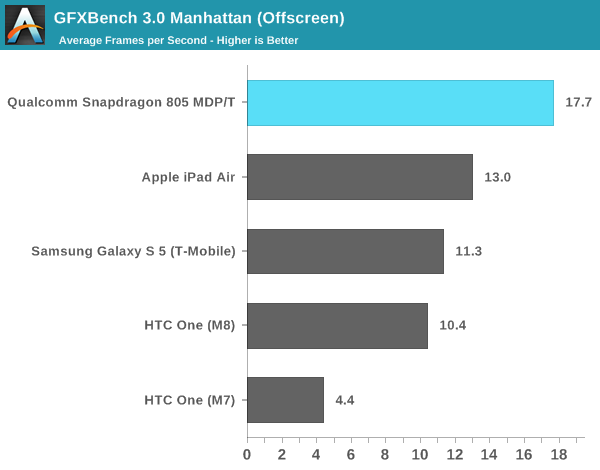
In an apples to apples comparison at the same resolution, Adreno 430 is over 50% faster than Adreno 330. It's also faster than the PowerVR G6430 in the iPad Air.
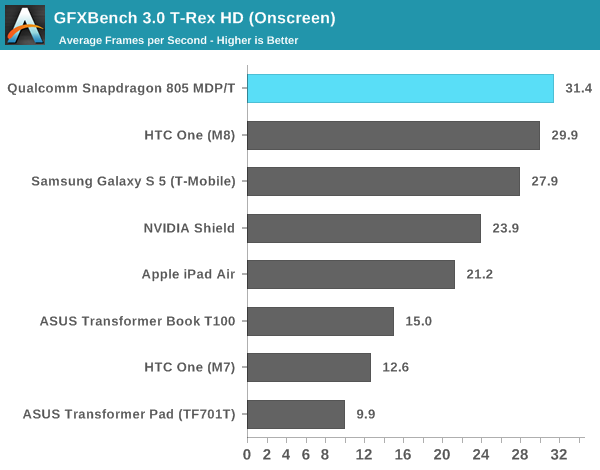
Once again we see an example where Adreno 420 is able to drive the MDP/T's panel at 2560 x 1440 at the same performance as Adreno 330 can deliver at 1080p
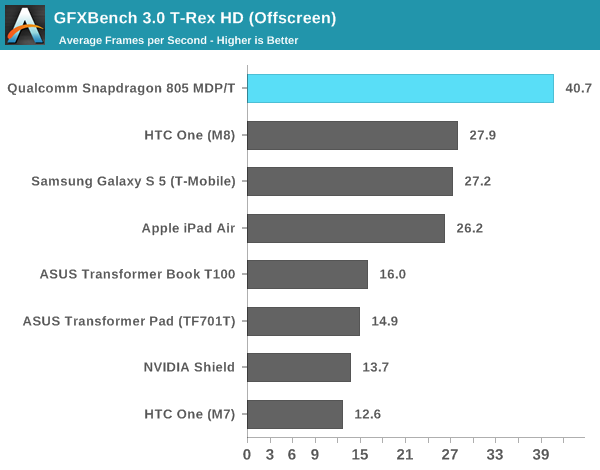
At 1080p, the Adreno 420/S805 advantage grows to 45%.
I've included all of the low level GFXBench tests below if you're interested in digging any deeper. It's interesting that we don't see a big increase in the ALU test but far larger increases in the alpha blending and fill rate tests.
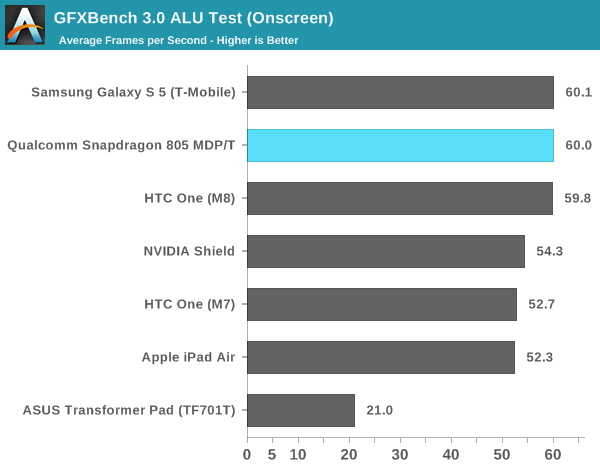
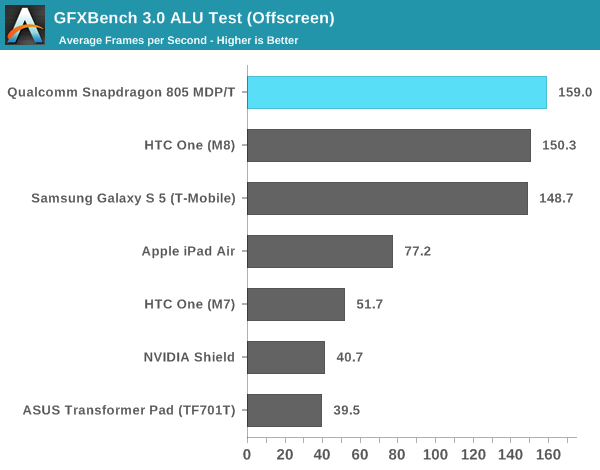
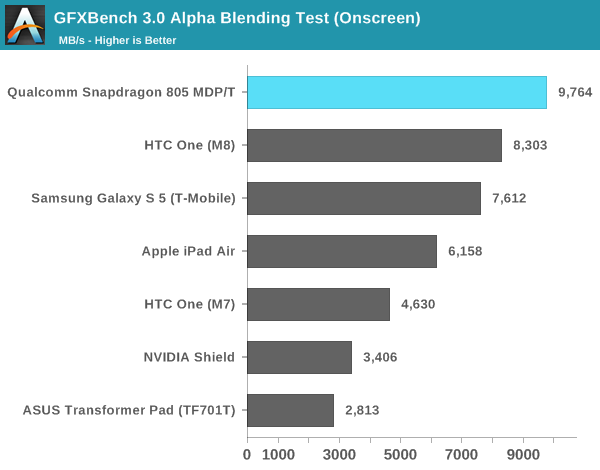

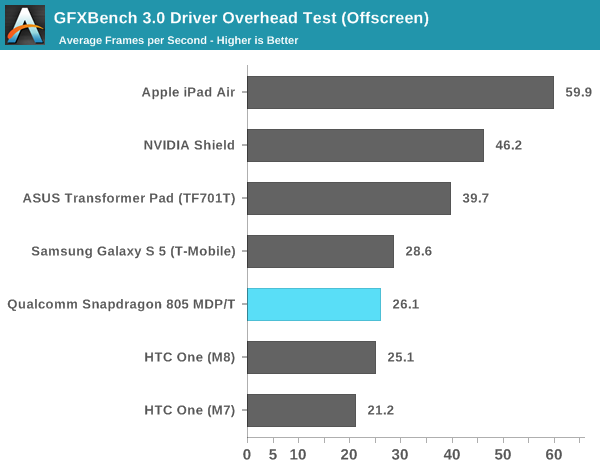
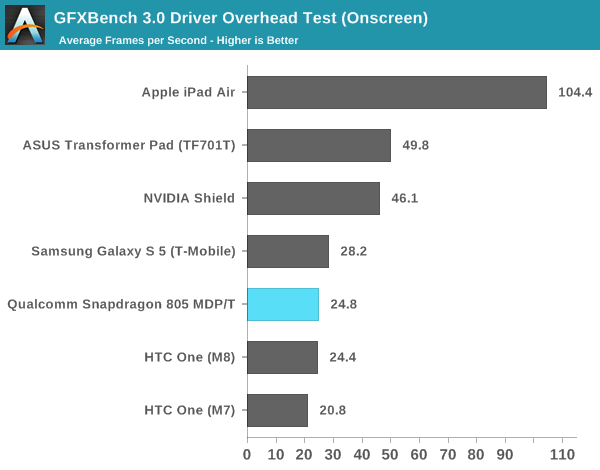
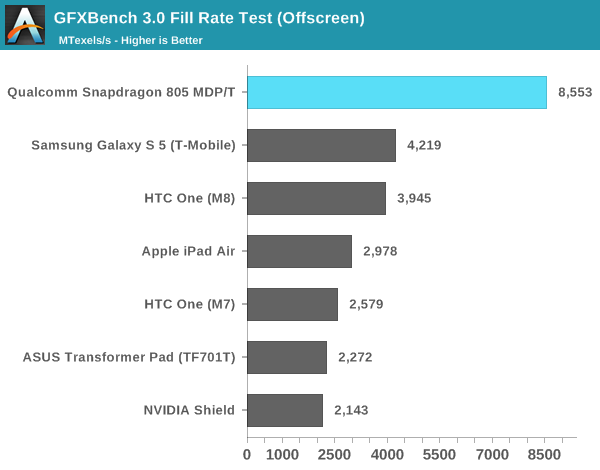
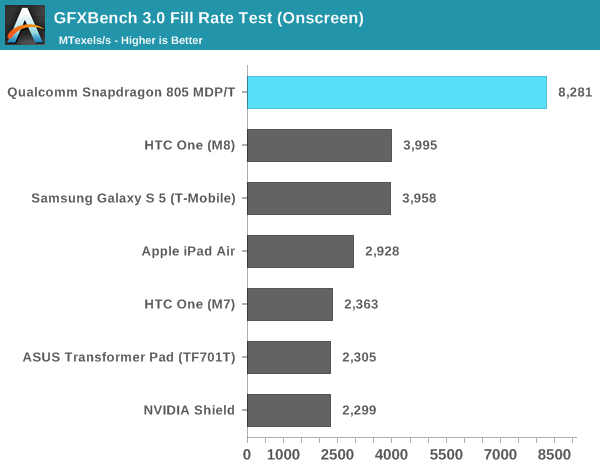










149 Comments
View All Comments
phoenix_rizzen - Friday, May 23, 2014 - link
Snapdragon S4 Pro didn't have an integrated modem (APQ80xx) and it sold quite well into phones like the LG Optimus G / Nexus 4.jerrylzy - Thursday, May 22, 2014 - link
The Memory Interface of Snapdragon 805 should be 2 x 64bit instead of 4 x 32bit...Zaydax - Thursday, May 22, 2014 - link
Just noticed: First page of the review says 32 nm. Aren't these all 28nm?As always, great review!
Zaydax - Thursday, May 22, 2014 - link
Never mind. totally read that wrong. It said 32 bit...jjj - Thursday, May 22, 2014 - link
At least it's not just a rebrand like the 801, we want 20nm already!On the flip side, really looking forward to the A53 SoCs about to arrive from Qualcomm and Mediatek, the Allwinner A80 quad A15, the Rockchip RK3288 with it's quad A17 (not sure it's not A12 ,we'll see soon i guess) and the quad A17 MediaTek MT6595. The more budget side should be getting some nice perf boost.
And while at it, heave you guys heard anything about Intel investing/collaborating with Rockchip?
hahmed330 - Thursday, May 22, 2014 - link
I actually found very detailed power consumption figures for Jetson Tegra K1.... I am quite surprised how low power it is... I am quite surprised anand missed that... Here is the link....http://developer.download.nvidia.com/embedded/jets...
Also for even more geeky details including the schematics...
https://developer.nvidia.com/jetson-tk1-support
hahmed330 - Thursday, May 22, 2014 - link
660 mW at idle... 3660 mW running at iPhone 5S speed... At full load at 950mhz 6980mW...These numbers are SOC+DRAM...
henriquen - Thursday, May 22, 2014 - link
"Tegra K1 performance measured on Jetson TK1 platform running LINUX"Ryan Smith - Thursday, May 22, 2014 - link
Memory bandwidth! Sweet, sweet memory bandwidth!bradleyg5 - Thursday, May 22, 2014 - link
Hope this chipset doesn't just come on 2560x1440 screens because the bump in performance isn't going to match the increased demands of that resolution.The only test you did that reflects real world gaming(in my experience) is 3d mark so it's pretty shocking how poor it does.
40% improved performance might as well mean nothing because the current chips rarely even run full power. So basically a 20% power efficiency bump is the only thing that will be actualized.
X-Com will drain my note3's entire battery in about 2 1/2 hours where the 800 runs full power.
The better shader support is by far the biggest news, direct x 11 effects are solely needed, shaders in games currently look like direct x 7. So that's a massive leap.
All the visual fidelity currently comes from running games at very high resolution with high poly counts. I wonder if in the next generation we are going to see developers run games under native resolution, think of what you could do with shaders running at 720p instead of 1440p. Now that you have all the advanced lighting and shadowing effects why would you want to burn up all your performance on super high resolutions.
The xbox 1 and ps4 don't even run most games at 1080p it's sort of crazy that mobile games do. You aren't going to get ps3 level graphics at 1440p but you could at 720p.